Martin Luther King, Jr. Memorial
Introduction
Text-to-speech Audio
This West Potomac Park memorial commemorates one of the leaders of the civil rights movement, Martin Luther King, Jr. (1929-1968). A Baptist minister and advocate of non-violent protest, he rose to prominence within the movement and became a national figure as a result of the Montgomery Bus Boycott (1955-1956). Between 1957 and 1964, King founded the Southern Christian Leadership Conference, organized the March on Washington for Jobs and Freedom, and received the Nobel Peace Prize for his leadership efforts. On April 4, 1968, while in Memphis to lend his support to striking sanitation workers, he was assassinated by James Earl Ray. Nearly thirty years after King’s death, Congress authorized his fraternity, Alpha Phi Alpha, to erect a memorial in his honor in the nation’s capital. After its formation, the Martin Luther King, Jr. National Memorial Project Foundation selected West Potomac Park's Tidal Basin as the memorial’s site and held a design competition, which drew more than 900 entrants. In 2000, the foundation selected the proposal submitted by ROMA Design Group. To execute the work, the group hired Chinese sculptor Lei Yixin. Dedicated in 2011, the memorial consists of a thirty-foot-tall rough granite mountain with a large section sliced from it. The section features a relief of King, standing defiantly with arms crossed. The design was inspired by a line from the civil rights leader’s famous “I Have a Dream Speech” in which he states: “With this faith, we will be able to hew out of the mountain of despair a stone of hope.”
Images
Martin Luther King, Jr. Memorial in Washington, D.C.
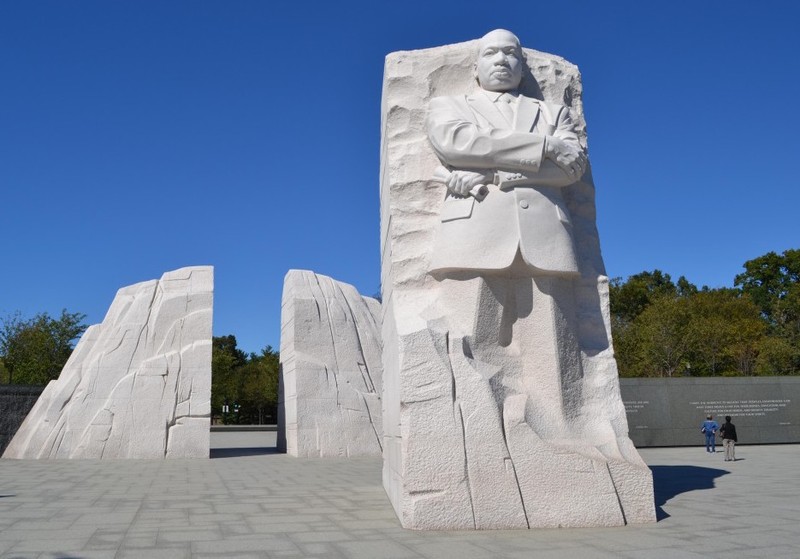
A closer look at the memorial's relief of King
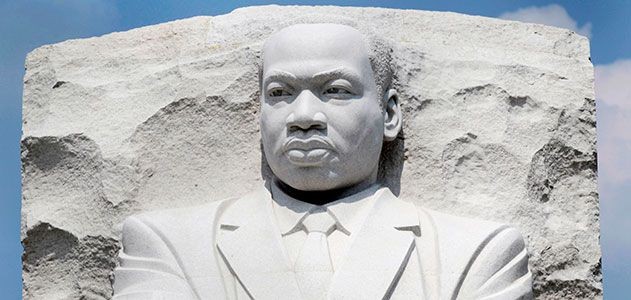
A paraphrase of the quote from King's 1963 "I Have a Dream" speech that inspired the memorial's design
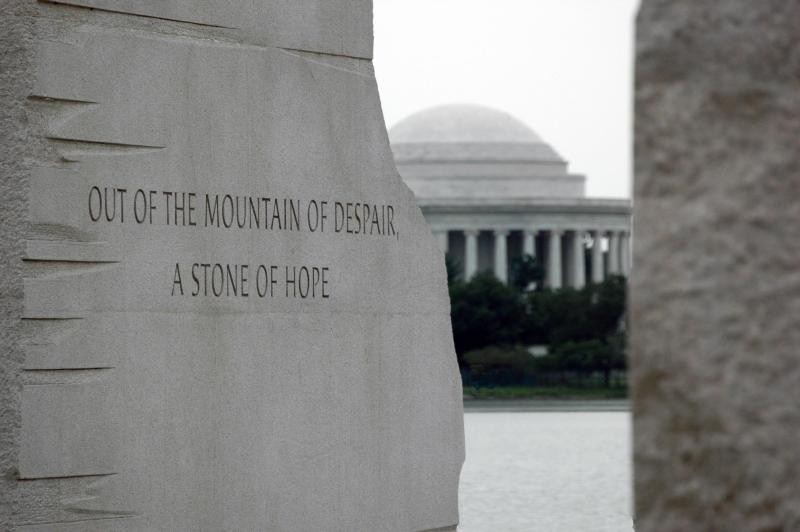
Chinese sculptor Lei Yixin with a model of the memorial
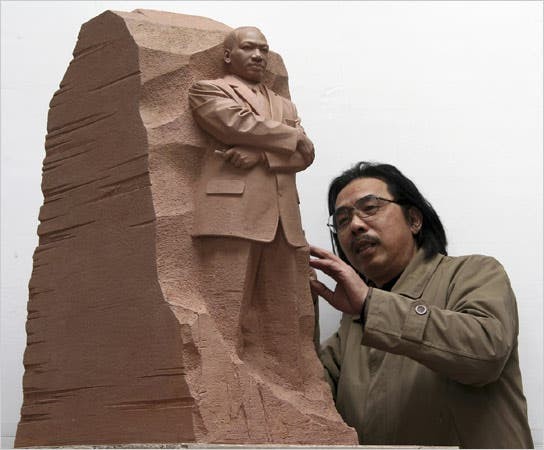
Martin Luther King, Jr. at the March on Washington in August 1963
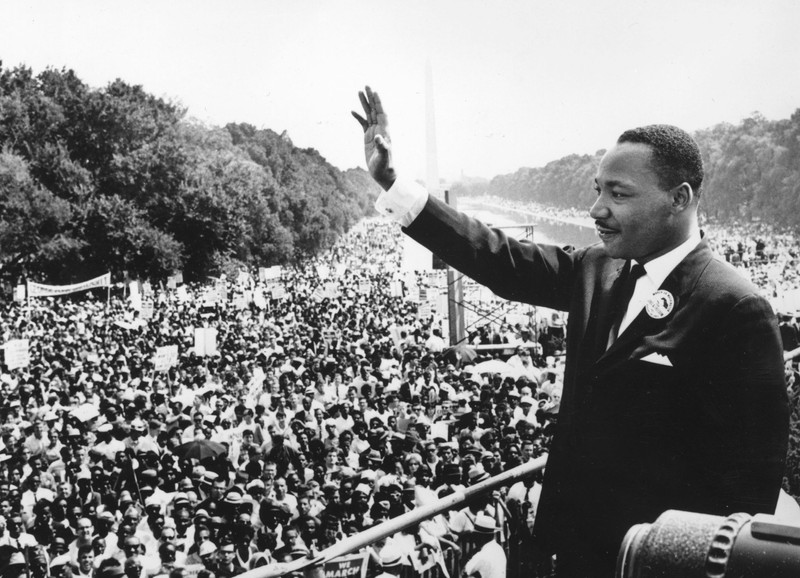
Backstory and Context
Text-to-speech Audio
Martin Luther King, Jr. was born into a middle-class family on January 15, 1929 in Atlanta, Georgia. The second of four siblings, he was the eldest son of Martin Luther King, Sr., a Baptist minister, and Alberta Williams King, a former schoolteacher. Growing up, King attended the city’s segregated public schools. An extremely bright student, he graduated high school at the age of fifteen. King matriculated at Atlanta’s Morehouse College, where he studied medicine and law. While at Morehouse, he came under the mentorship of the college’s president, Dr. Benjamin Mays, a theologian and racial justice advocate. Inspired by Mays, King decided to follow in the family tradition by entering the ministry. After graduating from Morehouse in 1948, he enrolled at Crozer Theological Seminary in Philadelphia, where he earned a bachelor’s degree in divinity in 1951. King then attended Boston University to complete his graduate studies. While attending the university, he joined Alpha Phi Alpha Fraternity and married Coretta Scott, a young woman from Alabama enrolled at the city’s New England Conservatory of Music. The marriage ultimately produced four children.
After completing his required coursework at Boston University, King became pastor of the Dexter Avenue Baptist Church in Birmingham, Alabama in 1954. The following year, the organizers of the Montgomery Bus Boycott selected him as their leader and official spokesman. The successful protest transformed King, then only in his late twenties, into a national figure and a leader of the civil rights movement. In 1957, he and other African American ministers formed the Southern Christian Leadership Conference, a civil rights organization that he led until his death. An advocate of non-violent protest influenced by the likes of Henry David Thoreau and Mahatma Gandhi, King organized the March on Washington for Jobs and Freedom, held in August 1963. At the landmark event, he delivered his famous “I Have a Dream” speech on the steps of the Lincoln Memorial to a crowd of between 200,000 to 300,000 people. The following year, King received the Nobel Peace Prize. In 1964, he led a march from Selma, Alabama to the state capital of Montgomery, which helped influence the passage of the Voting Rights Act the following year. In the late 1960s, with racial segregation dismantled, federal protections for African American suffrage in place, and the rise of more militant Black leaders, King turned his attention to other issues affecting African Americans, including workers’ rights, poverty, and the Vietnam War. On the evening of April 4, 1968, while in Memphis to lend his support to striking sanitation workers, he was assassinated on the balcony of the Lorraine Motel by James Earl Ray. In 1983, President Ronald Reagan signed a bill into law establishing Martin Luther King, Jr. Day as a federal holiday.
Nearly thirty years after King’s death, Congress authorized his fraternity, Alpha Phi Alpha, to erect a memorial in his honor in the nation’s capital. After its formation, the Martin Luther King, Jr. National Memorial Project Foundation selected West Potomac Park’s Tidal Basin as the memorial’s site and held a design competition, which drew more than 900 entrants. In 2000, the foundation selected the proposal submitted by ROMA Design Group. To execute the work, the group hired Chinese sculptor Lei Yixin. Dedicated in 2011, the memorial consists of a thirty-foot-tall rough granite mountain with a large section sliced from it. The section features a relief of King, standing defiantly with arms crossed. The design was inspired by a line from the civil rights leader’s famous “I Have a Dream Speech” in which he states: “With this faith, we will be able to hew out of the mountain of despair a stone of hope.” Soon after it was unveiled, the memorial generated controversy because of a paraphrased quote featured on it. Critics argued that the paraphrased quote (“I was a drum major for justice, peace and righteousness”) sullied King’s memory by making him seem arrogant. In late 2012, Secretary of the Interior Ken Salazar announced his decision to remove the controversial quote. The following year, Yixin removed the quote from the memorial.
Cite This Entry
Curran, Francis and Clio Admin. "Martin Luther King, Jr. Memorial." Clio: Your Guide to History. March 10, 2024. Accessed April 18, 2025. https://theclio.com/tour/149/5
Sources
"Building the Memorial." NPS.gov. U.S. Department of the Interior. Web. 8 April 2021 <https://www.nps.gov/mlkm/learn/building-the-memorial.htm>.
History.com Editors. "Martin Luther King, Jr." History. A&E Television Networks. 1 April 2021. Web. 8 April 2021 <https://www.history.com/topics/Black-history/martin-luther-king-jr>.
"Martin Luther King Jr. - Biography." NobelPrize.org. Nobel Media AB 2021. Web. 8 April 2021 <https://www.nobelprize.org/prizes/peace/1964/king/biographical/>.
https://www.charlestonchronicle.net/2018/01/26/dream-of-king-monument-in-charleston-remains-a-dream-deferred/
https://www.smithsonianmag.com/history/building-the-martin-luther-king-jr-national-memorial-54721785/
https://www.nps.gov/mlkm/learn/building-the-memorial.htm
https://www.nytimes.com/2007/09/24/arts/design/24statue.html
https://www.nytimes.com/2020/01/19/opinion/martin-luther-king.html

